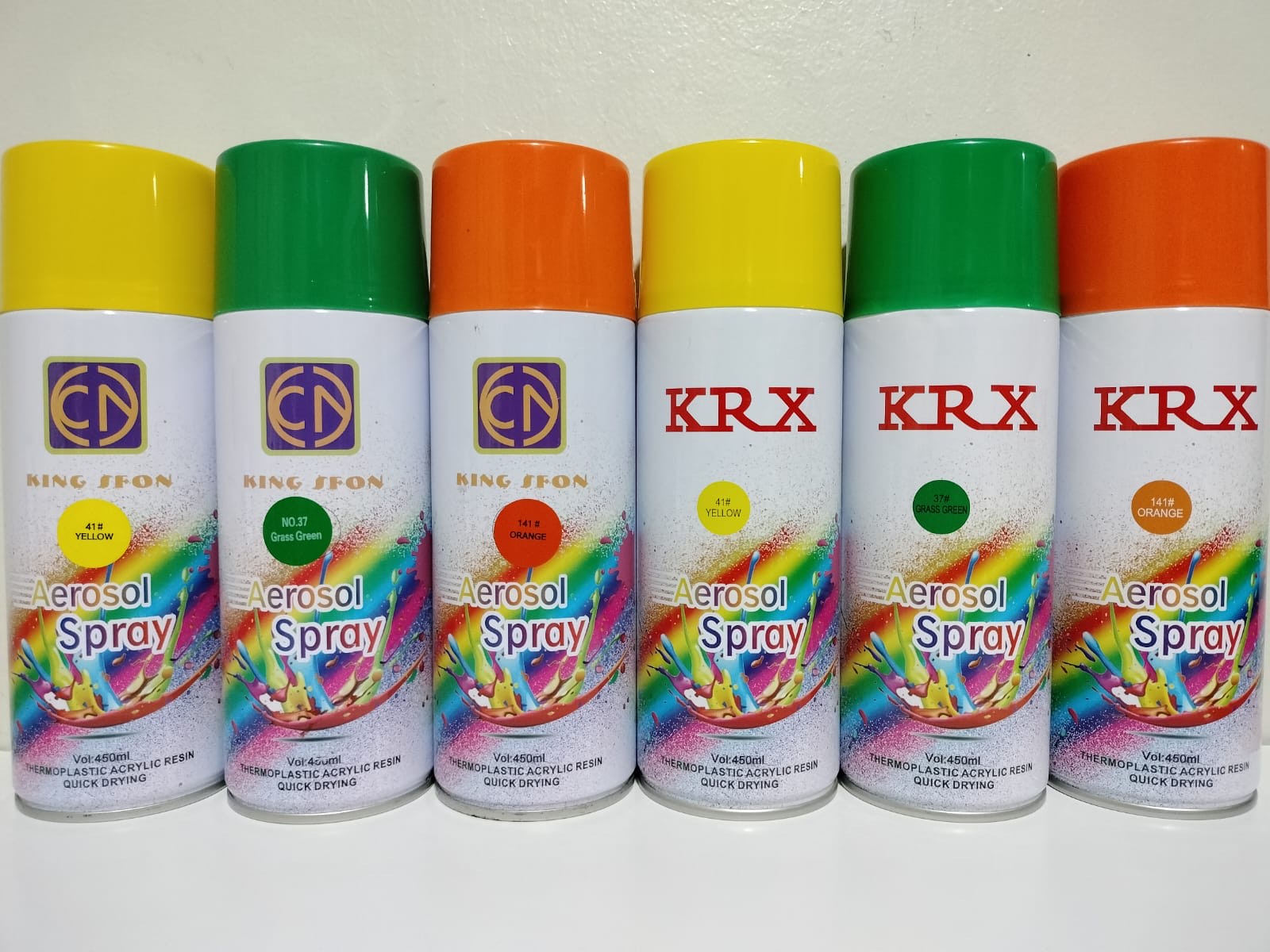Warning Out on Three Violative Paint Products with High Lead Content
23 April 2024, Quezon City. The EcoWaste Coalition has issued a new warning against imported paint products contaminated with high concentrations of lead, a toxic chemical not allowed in the manufacture of paints.
As part of its vigilant campaign to get rid of lead-containing paints and the risks that such paints pose to human health, the waste and pollution watchdog group announced it has detected lead way above the regulatory standard in three variants of KRX Aerosol Spray obtained from an online seller for P78 each.
Consumers are advised not to purchase and use the lead-containing KRX spray paints.
To recall, DENR Administrative Order No. 2013-24, or the Chemical Control Order for Lead and Lead Compounds, established a maximum limit of 90 parts per million (ppm) for total lead in all paints. The same directive phased out leaded decorative and industrial paints in December 2016 and December 2019, respectively.
Using an Olympus Vanta M Series X-Ray Fluorescence (XRF) analyzer, the group detected 37,160 ppm, 38,160 ppm and a whopping 100,000 plus ppm in the orange, grass green and yellow variants of KRX Aerosol Spray.
While the label offers information about the uses of KRX Aerosol Spray, instructions for use and some health and safety precautions, no information was provided about the product’s lead content, its manufacturer or distributor, and its manufacturing and expiration dates.
Interestingly, the packaging of KRX Aerosol Spray is exactly the same as that of King Sfon Aerosol Spray. As per laboratory tests commissioned by the EcoWaste Coalition, nine variants of King Sfon Aerosol Spray contained lead ranging from 9,600 to 86,300 ppm.
Spray paints, which are mostly sourced from overseas manufacturers, are used to coat articles made of metal, wood, plastic, ceramic and other materials, fix scratches and minor damages in appliances, cars, motorcycles, bikes, toys and accessories, as well as to decorate art and other school projects.
According to the Global Alliance to Eliminate Lead Paint (or the Lead Paint Alliance), a cooperative initiative co-led by the United Nations Environment Program (UNEP) and the World Health Organization (WHO), “paints containing lead pose risks both in their application phase (as new paint) and once applied, giving rise to legacy issues that extend beyond the life of the painted surface due to chipping and deterioration or demolition of the painted surface.”
Lead exposure can cause serious health effects, including permanent damage to the brain and the nervous system, problems with kidney function, increased risk of high blood pressure, and reproductive disorders.
“Lead can affect children’s brain development, resulting in reduced intelligence quotient (IQ), behavioural changes such as reduced attention span and increased antisocial behaviour, and reduced educational attainment,” according to the WHO.
“There is no level of exposure to lead that is known to be without harmful effects," warned the WHO as it pointed out that “lead exposure is preventable."
The EcoWaste Coalition is one with the International Pollutants Elimination Network (IPEN), Lead Paint Alliance, Philippine Paint and Coatings Association, Inc. (PPCAI), DENR and the government of the Philippines in the continuing global campaign to protect the people, especially the children, women and workers, against lead-containing paints, a major source of lead exposure.
-end-
Reference:
https://chemical.emb.gov.ph/
https://ipen.org/sites/
https://www.who.int/news-room/






Comments